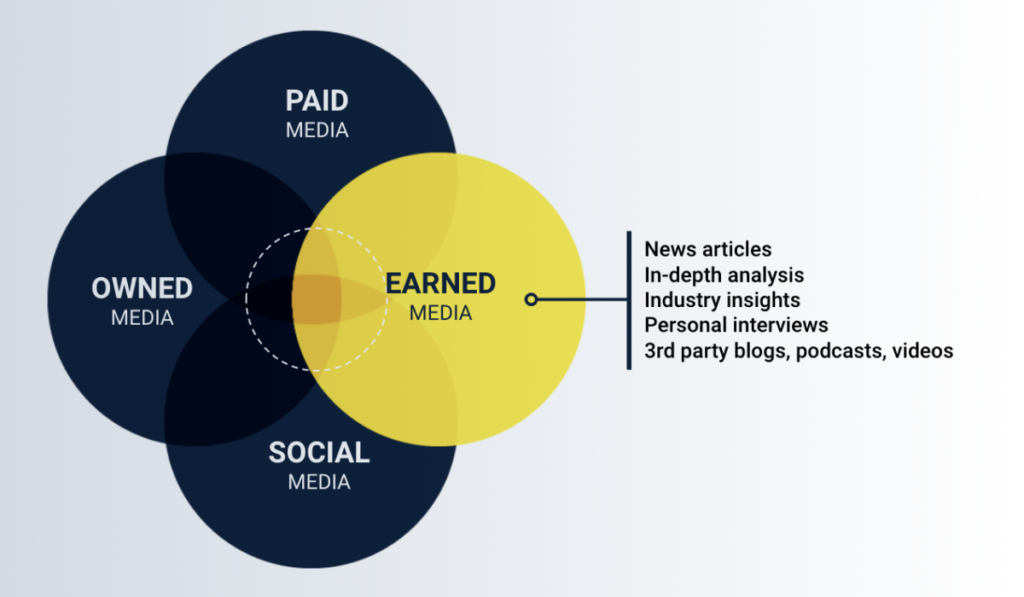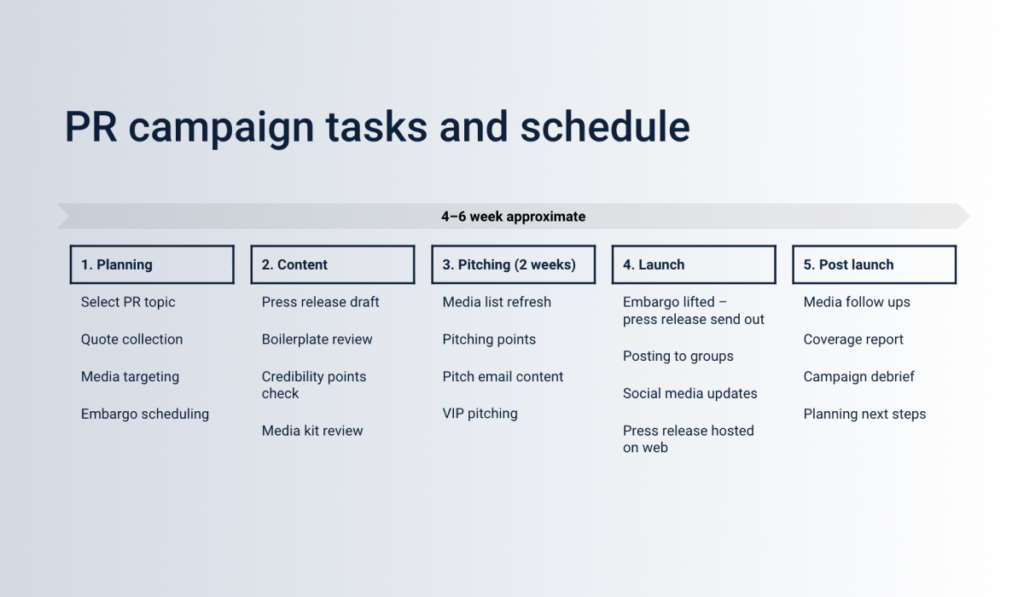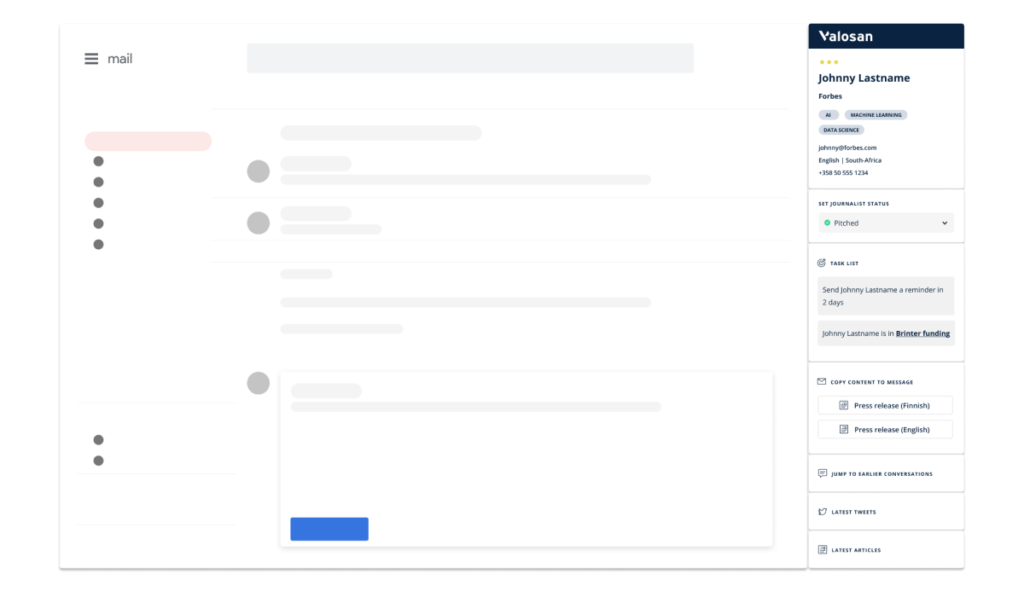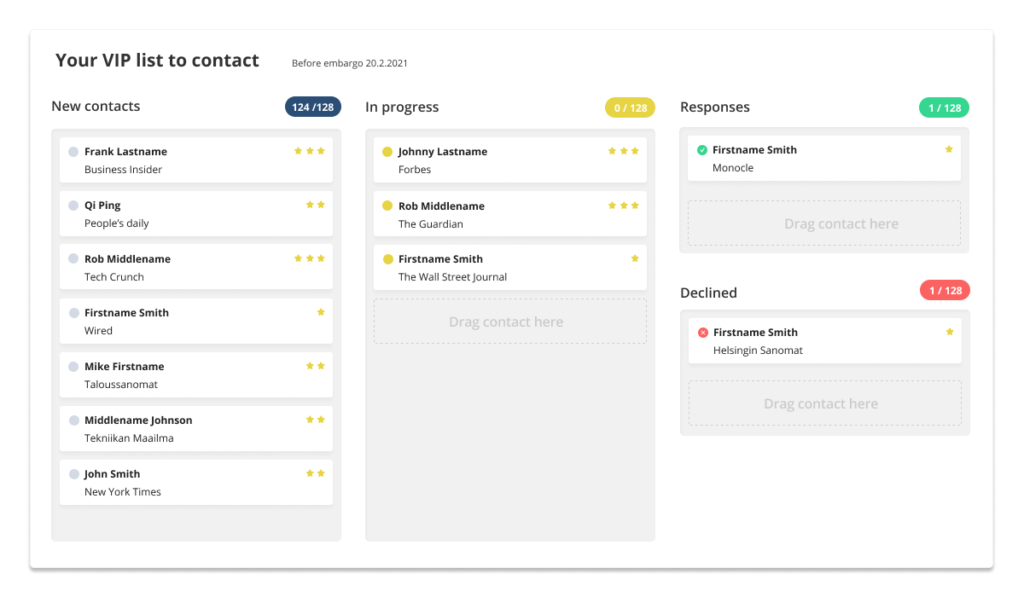Head of Growth at Valosan
PR is one of the tools in the communications & marketing toolkit, and it is used to earn media visibility. It is about an impartial or objective person writing about your company because there is something newsworthy to tell. PR, when done right, builds your company’s credibility and impacts buyers and the public opinion in a positive way.

Before jumping into your PR campaign and pitching your story to journalists, there is some homework to do. It’s necessary to understand the business and media environment you are in –this is best done by researching two things:
A simple list of the articles, a short description of the content, and links to the articles will do the trick. To decide the focus of your PR campaign, you can sum up what interests the public and cross-check the interests with the topics that are valuable to your company.
Before starting a PR campaign, it is crucial to communicate the schedule and tasks of the campaign to all involved parties. Below, you will find an example of the steps included in the media pitching process and how much time it takes to run through the whole process. Feel free to use this in your internal meetings where you plan the PR campaign.

Setting up and running your PR campaign includes four steps:
The first step of your PR campaign is to prepare the assets for your campaign. This means having at least the following elements on hand:
It’s good to have at least your company’s boilerplate, basic information, images, and contact details in a media kit. This can simply mean a shared Google Drive folder sent to the journalists along with the press release or a full-blown media page on your company website.
Before sending your press release to the journalists, it’s good to approach them by email, phone, or social media to raise their interest with a short and on-point pitch. The pitch message should include something personal for the journalist – perhaps they have written about a similar topic before, or you were impressed by some of their earlier articles.
Find a template of a pitch email and a press release in our PR Pitching Guidebook.
Valosan is a media relations management tool that allows you to easily include your pitch template and a ready-made press release to emails through the Valosan Gmail extension.

Depending on the topic and the markets that you are pitching your story to, you have tens or even hundreds of journalists that you wish to pitch your story to. A good practice is to have a VIP media list that you spend more time on and then a long list of journalists that you just directly send the press release to. You need to send journalists the pitch, reply to their emails, follow up on the ones that did not respond, and, finally, send the press release. It’s a hassle to stay up-to-date on which journalist is in which phase of the pitching process, especially if you share the work with your colleagues.
The simplest but laborious way to manage the pitching work is to have an Excel sheet of journalists and update the status of the journalists as the PR campaign proceeds. On Valosan, there is a Kanban view of journalists, and the status of each contact updates automatically based on your and their activities.

PR campaigns do not end with sending out the press release. There are several post-campaign activities to make the most out of your media visibility.
Internally
Remember to share the media hits internally – not only with your marketing and communications team but also with everyone else. Media hits have surprising internal effects – employees feel engaged in working for companies that have a meaningful impact on the world, and successful PR campaigns are one way to illustrate this.
Externally
Remember to thank the journalists who publish your story to stay in touch with them. They are the key stakeholders for successful PR campaigns in the future. These journalists already know your company, so it might be easier to stand out in their inbox next time. After all, journalists receive dozens of pitches and press releases daily.
Get an extensive list of post-campaign follow-up tasks from our PR Pitching Guidebook.
After the PR campaign is done, you should measure its results. There are two ways to measure the impact of your PR campaigns: activity metrics and performance metrics.
Activity metrics
Activity metrics can include, for example, the number of emails sent or journalists contacted during the PR campaign. It might be a good idea to measure how many of the journalists reply to you and how many emails bounce. This helps you to understand when to update your media list. Activity metrics are key to help you understand the amount of work required to reach your campaign goals.
Performance metrics
Examples of campaign performance metrics are the number of media hits and the quality of the media outlets that share your news. An example of a long-term performance metric would be, for example, share of voice in the media compared to your competitors.
Download the PR Pitching Guidebook, including templates for media pitching, media lists, and more.
We know you’re busy. That’s why we built a network of PR specialists and a tool to make the whole process easy, manageable, and transparent. Monitor your PR campaigns, manage your team, see your success — all in one place.
Built by Valosan, a subsidiary of San Francisco Agency a global PR agency HQ’d in Helsinki, Finland.
Copyright © 2020—2025 Valosan.